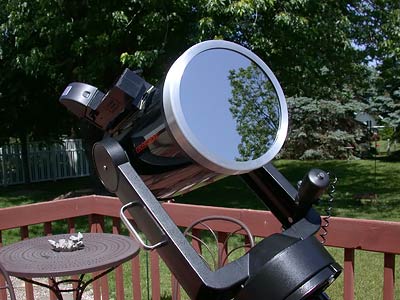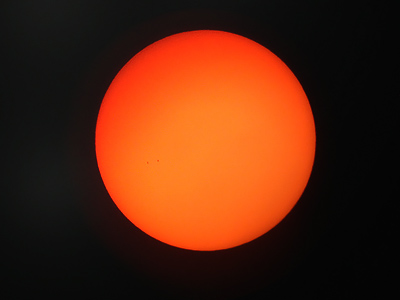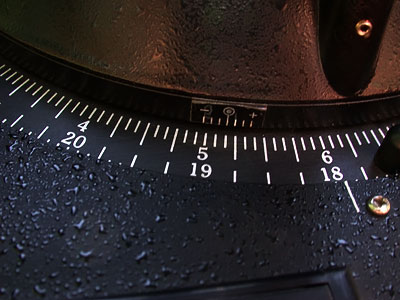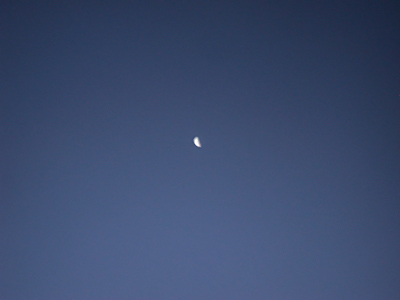
This post has nothing whatsoever to do with birds, other than the fact that while I was doing this a male American Robin aggressively chased an American Kestrel out of our backyard - pretty impressive. Well, I did go birding this morning and found a Yellow-breasted Chat, but maybe I did this so you all appreciate I'm not just a one-trick pony, so to speak.
Anyway, say you've got an astronomical telescope and you want to do some astronomy but it's the middle of the day with clear skies – what are your options other than the Sun and perhaps the moon? After checking Starry Night Pro software on my computer, I found out I could try something I haven't attempted in years – finding a planet during the day (other than Earth, of course) using the Sun.
Here's how it's done...
First, a warning: Never look directly at the Sun with a binocular or a telescope unless it is equipped with an appropriate solar filter. The second thing I need to know is what planetary targets are available. The easiest planet to find is Venus because it's the brightest (presently about -4.0 magnitude). I've done this with Mars, Mercury and Jupiter before, and I hear it's possible with Saturn, though I've never attempted it. This requires two pieces of data from Starry Night Pro, the current right-ascension and declination coordinates for both the Sun and Venus:
Venus:
RA: 8 hours, 27 minutes, 13.8 seconds.
DEC: 21 degrees, 32 minutes, 55 seconds N
The Sun:
RA: 5 hours, 10 minutes, 13.1 seconds
DEC: 22 degrees, 56 minutes, 48 seconds N
These are very precise, but since a 40mm eyepiece will have a fairly wide field of view, I only need to be approximate for achieving my goal. The telescope's polar axis needs to be polar-aligned in order for these numbers to be useful. Polar aligning is easier and more accurate at night because the North Star (Polaris) is the perfect guide since it's almost at 90 degrees in declination. However, using a compass and a bubble level, I merely position the telescope due north and level the telescope. Again, this doesn't have to be super precise. Once I'm satisfied the telescope as close to being polar aligned as I'm going to get it, I attach the solar filter, turn on the clock drive and locate the Sun. Ah, there it is. Might as well photograph it:

Only two small sunspots are visible. I say "small," but they're probably both nearly as large as the Earth in diameter. Now that the Sun is in the center of the telescope's field of view, it's time to set the telescope's coordinate circles. Because we're polar aligned, declination is a freebie. Looking at the declination circle, I can see my alignment is precise as it's pretty close to 22 degrees and 56 minutes when pointed at the Sun:

Now for Venus...
Next, I move the right-ascension circle to the Sun's coordinate of 5 hours, 10 minutes. Presto, circles are set.

Now to find any other celestial object (provided it's bright enough to be observed during the day), all I have to do is move the telescope to another pair of right-ascension and declination coordinates. Keeping the solar filter attached while moving the telescope away from the Sun, I get as close to the coordinates for Venus as I can. Once stopped, I remove the solar filter because Venus is way too dim to see with it attached. Checking the telescope's finder scope, I can see a tiny pin-point of light – it's Venus! Through the telescope's eyepiece (about 50x), I can see a bright white semi-circular disc against the blue sky, but there's a lot of air distortion. Nevertheless, here's a photograph of Venus taken during the middle of the afternoon:

All images 2007 © Mike McDowell

















